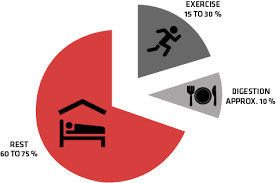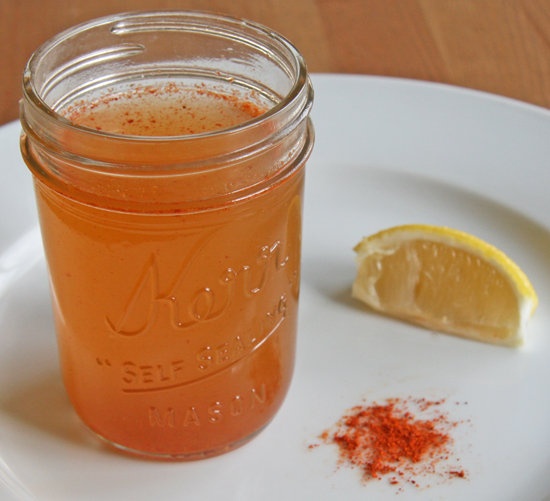Contrary to popular belief, metabolism is not only the burning of calories through exercise, it is the sum of all bodily functions used to rebuild or breakdown the cells of the body on a daily basis.
Most people think that caloric or metabolic activity only occurs during exercise, but that couldn’t be further from the truth. “The Biggest Loser” mentality is “burn what you eat”. This is simply not scientifically true, or healthy, for that matter.
Weight loss or weight gain is based 75-80% upon the choices you make daily, combined with how well your body functions. It is not based solely upon how much, or how hard you exercise. So, if you don’t get to workout today, don’t worry, your body composition goals can still progress to where you want them to be.
By following the tactics below, you can maximize the 75-80% of your daily caloric expenditure that has nothing to do with exercise. Exercise is important for a lot of reasons, it is just not as critical to weight loss as popularly marketed.
There are 3 processes of daily calorie expenditure:
- Resting Energy Expenditure (60-75% of total daily calories burned)
- Thermic Effect of Food (8-12% of daily calories burned)
- Metabolism of Exercise (15-30% of daily calories burned)
This posting explains how to maximize each category of caloric expenditure to optimally obtain a healthy body composition.
Resting Energy Expenditure (REE)
This is a scientific term used to explain the 60-75% of caloric daily expenditure due to just being alive and keeping the body working. It is the sum of all activity of life, and occurs in everybody.
To maximize this expenditure daily, here are a few tips:
- Drink water – it increases REE by 2-3% with each glass.
- Sleep 8 hours per night.
- Have regular and quality bowel movements.
- Build and keep muscle – it increases REE considerably, as hungry and healthy bone, muscle, and organs require more calories to keep them strong and vital.
- Deep breathe – respiration can enhance caloric expenditure or REE by 3-5% daily.
- Read – mental activity and concentration induces increases in REE.
Thermic Effect of Food
This accounts for 8-12% of daily caloric expenditure and is the process of digesting food. The more natural and unprocessed food is, the higher the response of caloric expenditure to digest it. The simpler and more refined food is, the lower the thermic effect.
To maximize this component of your daily metabolism:
- Eat smaller meals more frequently to allow the digestion process to work and clear itself before extra food comes in.
- Eat natural food, primarily from these categories: protein (chicken, turkey, fish, dairy, lean red meat, whey), quality fats (nuts, seeds, cold water fish, healthy oils [olive, coconut, canola]) and functional carbohydrates that have high fiber content (vegetables, fruit, high fiber whole grains).
- Keep sugars down from processed and refined sources (sugary drinks, refined grains, white starches). These have no positive effect on the body, spike blood sugar, and are easy to break down making the residual thermic effect very low.
Metabolism of Exercise
Exercise can account for 15-30% of calories burned in a day, so exercise is an important aspect in weight loss, but only to a maximum of 30% of total caloric expenditure. Maximizing this category depends on the duration, type, and intensity of the exercise.
Goals to maximize exercise caloric expenditure:
- Do something every day (walk, climb stairs, swim, ride bike, etc). Just be active.
- Do your activities a little longer each week maxing out at 30 minutes. You can go longer if you’re an athlete or are training for a specific event, but for the general population, 30 minutes is enough.
- Gradually increase intensity or make your activity harder.
- Lift some weights (this increases lean body mass which requires more calories at rest).
Summary
- Eat natural food as listed above. It builds lean tissue, makes the body utilize fat for energy, and increases both Resting Energy Expenditure and Thermic Energy Expenditure, which can be 80% of daily caloric expenditure.
- Add fuel to the fire by exercising. A nice maintainable combination of weight training (which builds muscle and has caloric burn effects all day) and cardiovascular exercise (for respiratory and heart health).

Subscribe To Our VIP Newsletter
Join our VIP mailing list to receive additional content that goes even deeper into the latest news and updates from our team as well as our wellness partners.




















